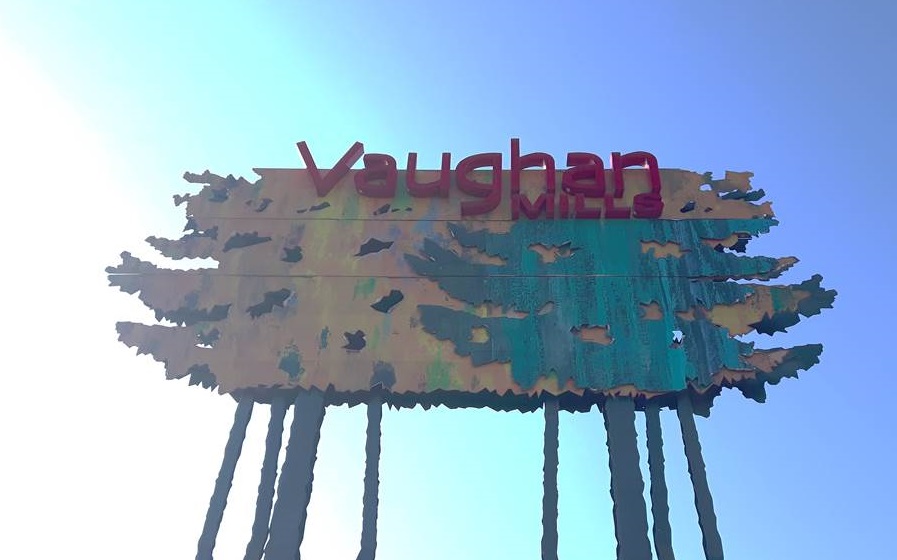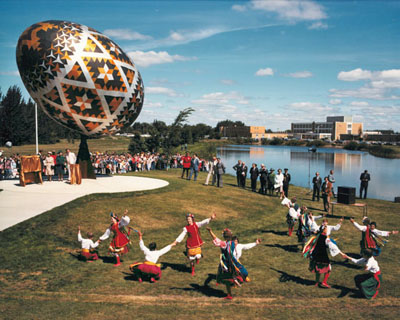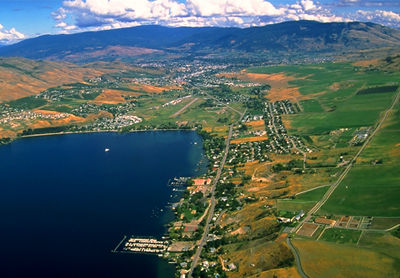Article
Vanier (Qué)
Vanier, Qué, City, pop 11 054 (2001c), 11 174 (1996c), 10 833(1991c), area 4.59 km2, inc 1916, was originally named Québec-Ouest until 1966, when it was changed to Vanier in honour of Governor-General Georges-Philéas VANIER.

Enter your search term
Signing up enhances your TCE experience with the ability to save items to your personal reading list, and access the interactive map.
Create AccountArticle
Vanier, Qué, City, pop 11 054 (2001c), 11 174 (1996c), 10 833(1991c), area 4.59 km2, inc 1916, was originally named Québec-Ouest until 1966, when it was changed to Vanier in honour of Governor-General Georges-Philéas VANIER.
"https://www.thecanadianencyclopedia.ca/images/tce_placeholder.jpg?v=e9dca980c9bdb3aa11e832e7ea94f5d9" // resources/views/front/categories/view.blade.phphttps://www.thecanadianencyclopedia.ca/images/tce_placeholder.jpg?v=e9dca980c9bdb3aa11e832e7ea94f5d9

Article
Vanscoy, Sask, incorporated as a rural municipality in 1909, population 2714 (2011c), 2629 (2006c). The Rural Municipality of Vanscoy is located about 30 km southwest of SASKATOON. The original name for this rural municipality was Logantown.
"https://www.thecanadianencyclopedia.ca/images/tce_placeholder.jpg?v=e9dca980c9bdb3aa11e832e7ea94f5d9" // resources/views/front/categories/view.blade.phphttps://www.thecanadianencyclopedia.ca/images/tce_placeholder.jpg?v=e9dca980c9bdb3aa11e832e7ea94f5d9

Article
Canada's largest concentration of researchers in the field of ENERGY is concentrated in Varennes.
"https://d3d0lqu00lnqvz.cloudfront.net/media/media/1a704adb-dfed-40f4-bbe4-bb40c5cf3113.jpg" // resources/views/front/categories/view.blade.phphttps://d3d0lqu00lnqvz.cloudfront.net/media/media/1a704adb-dfed-40f4-bbe4-bb40c5cf3113.jpg

Article
The Varsity Estates archaeological site is located on a glacial till in the Bow River Valley of west Calgary, Alberta.
"https://d3d0lqu00lnqvz.cloudfront.net/media/media/78bccd27-c0fd-4488-b664-c03524a8471e.jpg" // resources/views/front/categories/view.blade.phphttps://d3d0lqu00lnqvz.cloudfront.net/media/media/78bccd27-c0fd-4488-b664-c03524a8471e.jpg

Article
The area was granted to Philippe de Rigaud de VAUDREUIL in 1703. However, it was his successor, Michel Chartier de Lotbinière, who fostered the settlement and development of the seigneury that he had bought from the Vaudreuil family in 1763. The FUR TRADE and agriculture supported the local economy.
"https://www.thecanadianencyclopedia.ca/images/tce_placeholder.jpg?v=e9dca980c9bdb3aa11e832e7ea94f5d9" // resources/views/front/categories/view.blade.phphttps://www.thecanadianencyclopedia.ca/images/tce_placeholder.jpg?v=e9dca980c9bdb3aa11e832e7ea94f5d9

Article
Vaughan, ON, incorporated as a city in 1991, population 323,103 (2021 census), 306,233 (2016 census). The City of Vaughan — which includes the five constituent communities of Maple, Kleinburg, Concord, Woodbridge and part of Thornhill — is located in the York regional municipality, next to the northwest boundary of metropolitan Toronto. Traditionally an agricultural and milling community, Vaughan’s economy diversified over the latter half of the 20th century as immigration increased and the township developed into a city. Today, Vaughan is a multicultural community with a growing metropolitan core.
"https://d3d0lqu00lnqvz.cloudfront.net/media/media/c51ebfa2-7e27-4826-aad3-bcb5814f2ad4.jpg" // resources/views/front/categories/view.blade.phphttps://d3d0lqu00lnqvz.cloudfront.net/media/media/c51ebfa2-7e27-4826-aad3-bcb5814f2ad4.jpg

Article
Canada has seven primary vegetation regions, in addition to the marine flora found along the country’s coasts. Vegetation regions are geographical areas characterized by distinct plant communities. Community composition, determined primarily by climate (e.g., temperature, precipitation and sunlight), may be affected by factors such as geology, soil composition and erosion, water drainage patterns and human interference. Each vegetation region supports a characteristic animal community that may also affect its composition. This is a full-length entry about Vegetation Regions. For a plain-language summary, please see Vegetation Regions (Plain-Language Summary).
"https://d3d0lqu00lnqvz.cloudfront.net/media/media/56fb0e04-1063-4112-aa2e-881175f15c4d.jpg" // resources/views/front/categories/view.blade.phphttps://d3d0lqu00lnqvz.cloudfront.net/media/media/56fb0e04-1063-4112-aa2e-881175f15c4d.jpg

Article
Canada has seven primary vegetation regions, in addition to the marine flora found along the country’s coasts. Each region is characterized by distinct plant communities. The plants in each region are mostly determined by climate. Other factors that determine which plants grow in which region include geology, soil composition and erosion, water drainage patterns and human interference. This article is a plain-language summary of Vegetation Regions. If you are interested in reading about this topic in more depth, please see our full-length entry, Vegetation Regions.
"https://d3d0lqu00lnqvz.cloudfront.net/media/new_article_images/GeographyofAlberta/AlbertaPrairie.jpg" // resources/views/front/categories/view.blade.phphttps://d3d0lqu00lnqvz.cloudfront.net/media/new_article_images/GeographyofAlberta/AlbertaPrairie.jpg

Article
Vegreville, Alberta, incorporated as a town in 1906, population 5,708 (2016 census), 5,717 (2011 census). The town of Vegreville is located in the parkland region of east-central Alberta, 100 km east of Edmonton. It serves a rich agricultural region specializing in grains and some livestock.
"https://d3d0lqu00lnqvz.cloudfront.net/media/media/b8c1d06f-d8cf-4165-8482-e6a2dca8f83d.jpg" // resources/views/front/categories/view.blade.phphttps://d3d0lqu00lnqvz.cloudfront.net/media/media/b8c1d06f-d8cf-4165-8482-e6a2dca8f83d.jpg

Article
Verchères, Qué, Municipality, pop 5243 (2006c), 4782 (2001c), inc 1971. Verchères is 62 km northeast of Montréal, situated on the south shore of the St Lawrence River between LONGUEUIL and SOREL.
"https://d3d0lqu00lnqvz.cloudfront.net/media/media/5112ad49-d9a3-45a2-9cdd-ffa488d5f65a.jpg" // resources/views/front/categories/view.blade.phphttps://d3d0lqu00lnqvz.cloudfront.net/media/media/5112ad49-d9a3-45a2-9cdd-ffa488d5f65a.jpg

Article
Verdun is one of the province's oldest municipalities. It was founded in 1671 by Zacharie Dupuis, one of the first landholders on the Island of Montréal. He named Verdun after his native village of Saverdun in France.
"https://d3d0lqu00lnqvz.cloudfront.net/media/media/de406ed7-15e3-486d-a7a9-c19ef8365cb0.jpg" // resources/views/front/categories/view.blade.phphttps://d3d0lqu00lnqvz.cloudfront.net/media/media/de406ed7-15e3-486d-a7a9-c19ef8365cb0.jpg

Article
Vermilion, Alta, incorporated as a town in 1906, population 3930 (2011c), 4036 (2006c). The Town of Vermilion is located on the Vermilion River 190 km east of Edmonton.
"https://www.thecanadianencyclopedia.ca/images/tce_placeholder.jpg?v=e9dca980c9bdb3aa11e832e7ea94f5d9" // resources/views/front/categories/view.blade.phphttps://www.thecanadianencyclopedia.ca/images/tce_placeholder.jpg?v=e9dca980c9bdb3aa11e832e7ea94f5d9

Article
Vermilion Pass, elev 1651 m, is situated between Boom and Storm mountains on the BC-Alberta border, 42 km W of Banff. It takes its name from the mineral springs of iron oxide located along the VERMILION R, 9 km SW of the pass, where Indians gathered material for war paint and decoration.
"https://www.thecanadianencyclopedia.ca/images/tce_placeholder.jpg?v=e9dca980c9bdb3aa11e832e7ea94f5d9" // resources/views/front/categories/view.blade.phphttps://www.thecanadianencyclopedia.ca/images/tce_placeholder.jpg?v=e9dca980c9bdb3aa11e832e7ea94f5d9

Article
Vermilion River, 70 km (from its headstream to its confluence with the Kootenay R), rises in the Continental Ranges on the BC-Alberta border at the N end of KOOTENAY NATIONAL PARK. Fed by Tokumm Cr, it drains in a southerly direction, eventually emptying into the Kootenay R.
"https://www.thecanadianencyclopedia.ca/images/tce_placeholder.jpg?v=e9dca980c9bdb3aa11e832e7ea94f5d9" // resources/views/front/categories/view.blade.phphttps://www.thecanadianencyclopedia.ca/images/tce_placeholder.jpg?v=e9dca980c9bdb3aa11e832e7ea94f5d9

Article
Vernon, British Columbia, incorporated as a city in 1892, population 40,116 (2016 census), 38,150 (2011 census). The City of Vernon is located in the North Okanagan Valley, nestled between Okanagan, Kalamalka and Swan lakes.
"https://d3d0lqu00lnqvz.cloudfront.net/media/media/9442225e-ac4a-4c14-83f0-31050d516a0b.jpg" // resources/views/front/categories/view.blade.phphttps://d3d0lqu00lnqvz.cloudfront.net/media/media/9442225e-ac4a-4c14-83f0-31050d516a0b.jpg
